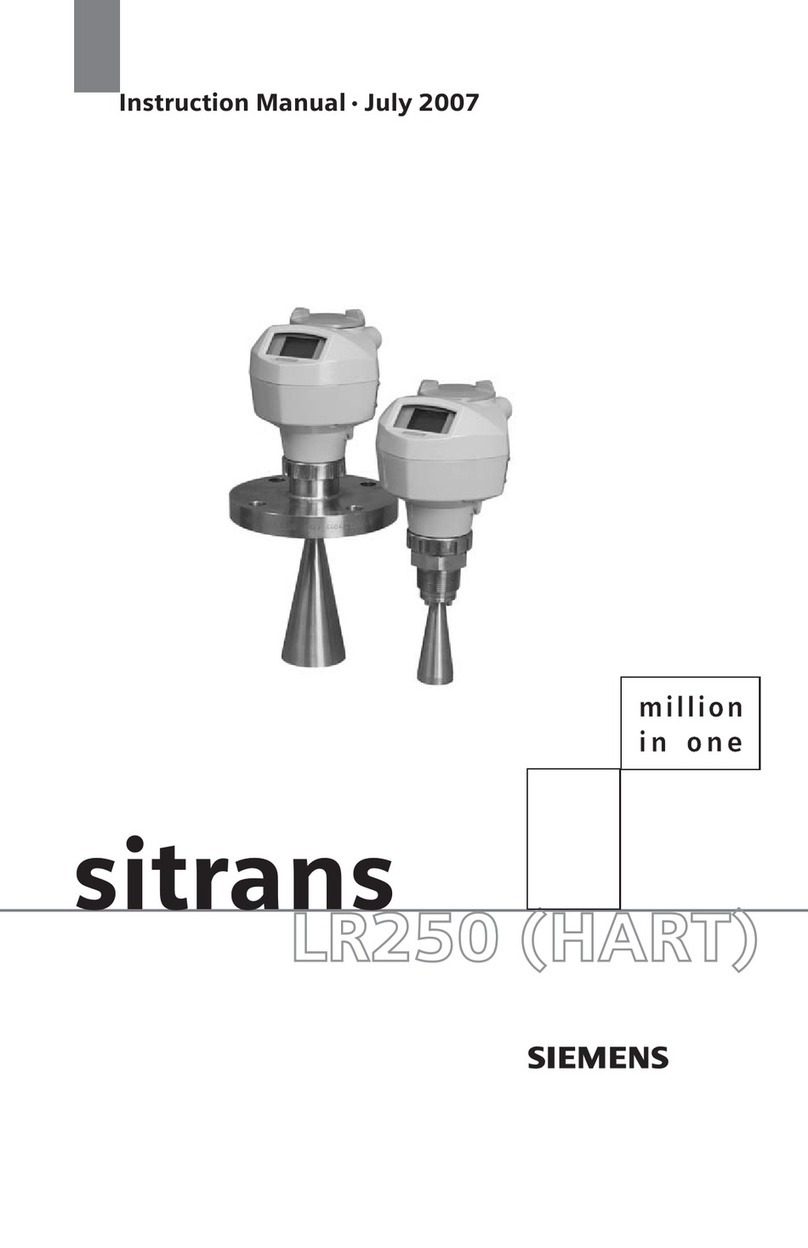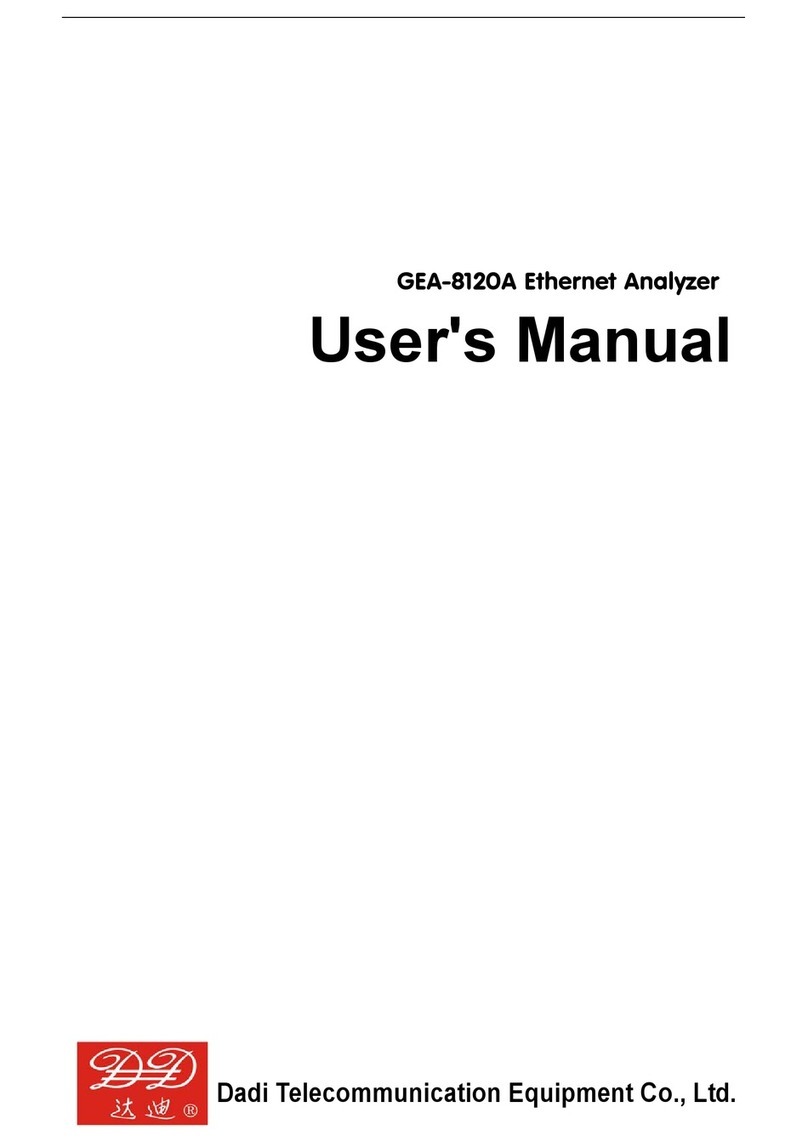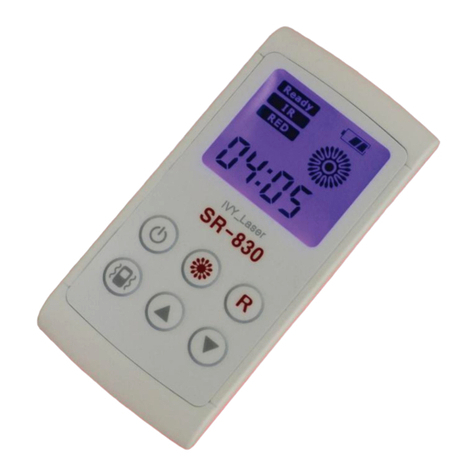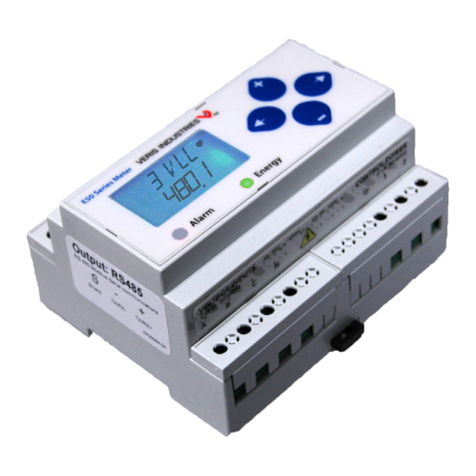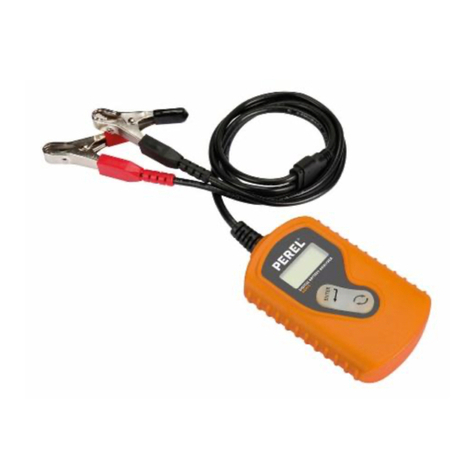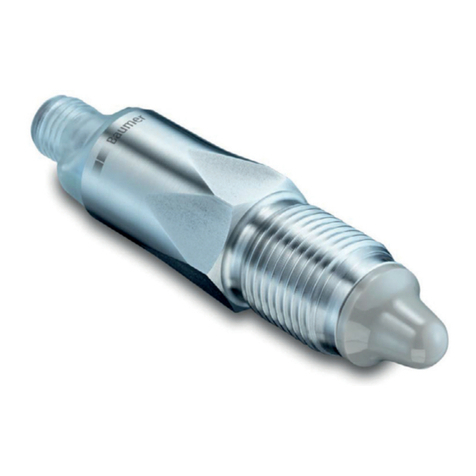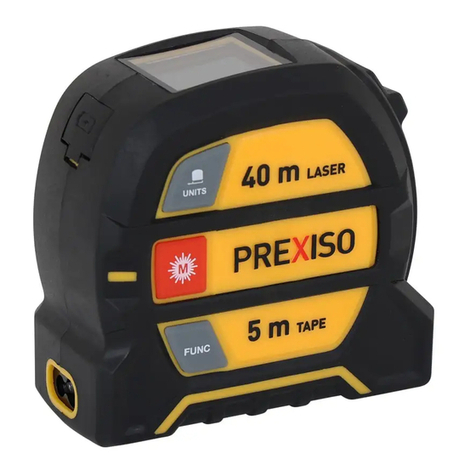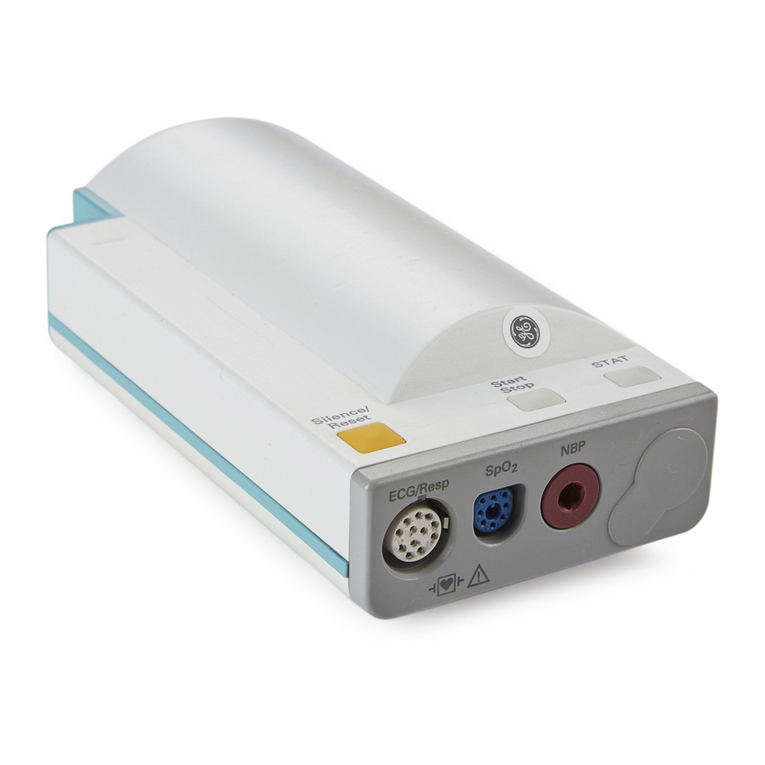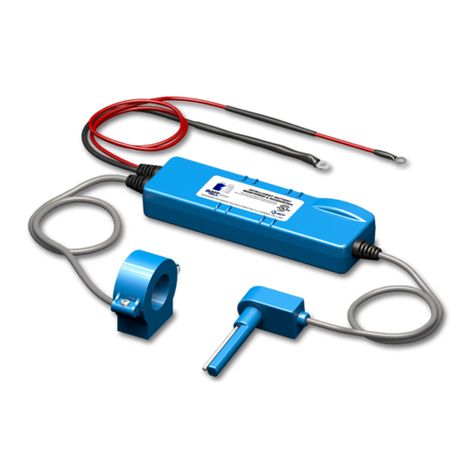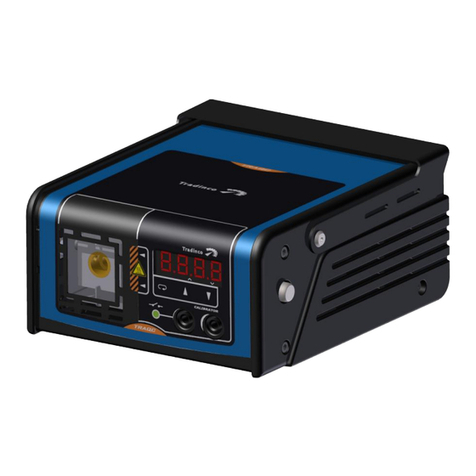Solartron Analytical 1260 User manual

-~
ARTISAN
®
~I
TECHNOLOGY
GROUP
Your definitive source
for
quality
pre-owned
equipment.
Artisan Technology
Group
Full-service,
independent
repair
center
with
experienced
engineers
and
technicians
on staff.
We
buy
your
excess,
underutilized,
and
idle
equipment
along
with
credit
for
buybacks
and
trade-ins
.
Custom
engineering
so
your
equipment
works
exactly as
you
specify.
•
Critical
and
expedited
services
•
Leasing
/
Rentals/
Demos
• In
stock/
Ready-to-ship
•
!TAR-certified
secure
asset
solutions
Expert
team
ITrust
guarantee
I
100%
satisfaction
All
tr
ademarks,
br
a
nd
names, a
nd
br
a
nd
s a
pp
earing here
in
are
th
e property of
th
e
ir
r
es
pecti
ve
ow
ner
s.
Visit our website - Click HERE

12600012_Gmacd/CB
1260
Impedance/Gain-Phase
Analyzer
OPERATING MANUAL

1260 Impedance Gain-Phaze Analyzer
12600012_Gmacd/CB
Solartron is a division of Solartron Group Ltd. Any reference to Schlumberger or
Schlumberger Instruments (the name of the company until November 1993) implies no
liability on the part of Schlumberger.
Solartron
a division of Solartron Group Ltd
Victoria Road, Farnborough,
Issue CB: January 1996
Solartron Part No. :12600
Hampshire GU14 7PW, UK.
1996
Solartron Solartron
Victoria Road, Farnborough 964 Marcon Blvd., Suite 200
Hampshire, GU14 7PW England Allentown, PA 18103, USA
Telephone: +44 (0)1252 376666 Telephone: +1 610-264-5034
Fax: +44 (0)1252 544981 Fax: +1 610-264-5329
Solartron Solartron
37 Rue du Saule Trapu Beijing Liasion Office
91882 MASSY, Cedex Room 327 Ya Mao Building
France No. 16, Bei Tu Chen Xi Road
Telephone: +33 (0)1 69 53 63 53 Beijing 100101, PR China
Fax: +33 (0)1 60 13 37 06 Telephone: +86 10-6238 4687
Fax: +86 10-6202-8617
E-mail: [email protected]
Web: http://www.solartron.com
For details of our agents in other countries, please contact our Farnborough, UK, office.
Solartron pursues a policy of continuous development and product improvement.
The specification in this document may therefore be changed without notice.

1260 Impedance Gain-Phaze Analyzer
12600012_Gmacd/CB
DECLARATION OF CONFORMITY
The directives covered by this declaration
73123/EEC Low voltage Equipment Directive, amended by 93/68/EEC
89/336/EEC Electromagnetic Compatibility Directive, amended by 92/31/EEC &
93/68/EEC
Product(s) 1260A Impedance Analyzer
Basis on which conformity is being declared
The product(s) identified above comply with the requirements of the EU directives
by meeting the following standards:
BS EN50081-1:1992 Electromagnetic Compatibility - Generic Emission Standard
Part 1: Residential, commercial and light industry.
BS EN50082-1:1992 Electromagnetic Compatibility - Generic Immunity Standard
Part 1: Residential, commercial and light industry.
EN61010-1:1993 Safety requirements for electrical equipment for
measurement, control and laboratory use. Accordingly the
CE mark has been applied to this product.
Signed
For and behaIf of Solartron, a division of Solartron
Group Limited
Authority: Engineering Manager
Date: December 1995
REGISTERED IN ENGLAND No.2852989. REGISTERED OFFICE: BYRON HOUSE,
CAMBRIDGE BUSINESS PARK, CAMBRIDGE, CB4 4WZ
Approved to BS EN ISO 9001:1994 and BS EN 123000, MOD Registered Company
A Roxboro Group company
Solartron
a division of Solartron Group Ltd
Victoria Road, Farnborough
Hampshire GUI4 7PW England
Tel +44 (0) 1252 376666
Fax +44 (0) 1252 543854

1260 Impedance Gain-Phaze Analyzer
12600012_Gmacd/CB
GENERAL SAFETY PRECAUTIONS
The equipment described in this manual has been designed in accordance with EN6 1010
‘Safety requirements for electrical equipment for measurement, control and laboratory use’,
and has been supplied in a safe condition. To avoid injury to an operator or service
technician the safety precautions given below, and throughout the manual, must be strictly
adhered to, whenever the equipment is operated, serviced or repaired. For specific safety
details, please refer to the relevant sections within the manual.
The equipment is designed solely for electronic measurement and should be used for no
other purpose. Solartron Instruments accept no responsibility for accidents or damage
resulting from any failure to comply with these precautions.
GROUNDING
To minimize the hazard of electrical shock it is essential that the equipment is connected to
a protective ground whenever the power supply, measurement or control circuits are
connected, even if the equipment is switched off. The protective ground for ac and dc
supplies is connected separately.
AC GROUND is connected via the ac supply cord. The cord must be plugged into an ac line
outlet with a protective ground contact. When an extension lead is used, this must also
contain a ground conductor. Always connect the ac supply cord to the supply outlet before
connecting the control and signal cables; and, conversely, always disconnect control and
signal cables before disconnecting the ac supply cord. The ac ground connection must have
a continuous current rating of 6A, and be capable of taking 25A for a minimum of one
minute.
AC SUPPLY VOLTAGE
Never operate the equipment from a line voltage or frequency in excess of that specified.
Otherwise, the insulation of internal components may break down and cause excessive
leakage currents.
FUSES
Before switching on the equipment check that the fuses accessible from the exterior of the
equipment are of the correct rating. The rating of the ac line fuse must be in accordance
with the voltage of the ac supply.
Should any fuse continually blow, do not insert a fuse of a higher rating. Switch the
equipment off, clearly label it “unserviceable” and inform a service technician.
EXPLOSIVE ATMOSPHERES
NEVER OPERATE the equipment, or any sensors connected to the equipment, in a
potentially explosive atmosphere. It is NOT intrinsically safe and could possibly cause an
explosion.
Continued overleaf.

1260 Impedance Gain-Phaze Analyzer
12600012_Gmacd/CB
SAFETY PRECAUTIONS (continued from previous page)
SAFETY SYMBOLS
For the guidance and protection of the user, the following safety symbols appear on the
equipment:
SYMBOL MEANING
Refer to operating manual
for detailed instructions of use.
Hazardous voltages.
NOTES, CAUTIONS AND WARNINGS
For the guidance and protection of the user, Notes, Cautions and Warnings appear
throughout the manual. The significance of these is as follows:
NOTES highlight important information for the reader’s special attention.
CAUTIONS guide the reader in avoiding damage to the equipment.
WARNINGS guide the reader in avoiding a hazard that could cause injury or death.
AVOID UNSAFE EQUIPMENT
The equipment may be unsafe if any of the following statements apply:
•Equipment shows visible damage.
•Equipment has failed to perform an intended operation.
•Equipment has been subjected to prolonged storage under unfavorable conditions.
•Equipment has been subjected to severe physical stress.
If in any doubt as to the serviceability of the equipment, don’t use it. Get it properly checked
out by a qualified service technician.
LIVE CONDUCTORS
When the equipment is connected to its measurement inputs or supply, the opening of
covers or removal of parts could expose live conductors. The equipment must be
disconnected from all power and signal sources before it is opened for any adjustment,
replacement, maintenance or repair. Adjustments, maintenance or repair, must be done
only by qualified personnel, who should refer to the Maintenance Manual.
EQUIPMENT MODIFICATION To avoid introducing safety hazards, never install non-
standard parts in the equipment, or make any unauthorized modification. To maintain
safety, always return the equipment to Solartron for service and repair.

1260 Impedance Gain-Phaze Analyzer
12600012_Gmacd/CB
1260 OPERATING MANUAL
CONTENTS
Chapter 1: Introduction
1.1 Key Features 1.3
1.2 Use of the Manual 1.4
1.3 Specification 1.5
Chapter 2: Installation
2.1 Accessories 2.3
2.2 Safety 2.3
2.2.1 General Safety Precautions 2.3
2.2.2 Grounding 2.4
2.3 Power Supply 2.5
2.3.1 Power Voltage Selector 2.5
2.3.2 Line Fuse 2.5
2.3.3 Power Cable 2.6
2.3.4 Connection Procedure 2.6
2.4 Rack Mounting 2.7
2.4.1 Telescopic Slide Kit (Accuride) 2.7
2.4.2 Rack Dimensions 2.7
2.4.3 Ventilation 2.7
2.4.4 Fitting Telescopic Slide (Accuride) 2.8
2.4.5 FittingTelescopic Slide 2.14
Chapter 3. Getting Started
3.1 Introduction 3.3
3.2 Instrument Keyboard 3.4
3.3 Power-up Status 3.6
3.4 Display 3.6
3.5 Using a Control Menu 3.7
3.6 Making a Simple Measurement 3.9
3.6.1 Preliminaries 3.9
3.6.2 Connecting the Item Under Test 3.10
3.6.3 Setting the Analyzer 3.10
3.6.4 Setting the Generator 3.12
3.6.5 Commanding a Measurement 3.14
3.6.6 Setting the Display 3.14
3.7 Using the Sweep Facility 3.16
3.7.1 Setting the Sweep 3.16
3.7.2 Preparing the History File 3.18
3.7.3 Commanding a Series of Measurements 3.18
3.7.4 Reading the History File 3.19
3.8 Using the Plot Facility 3.21
3.8.1 Making a Bode Plot of File Data 3.2
3.8.2 Making a Nyquist Plot of File Data 3.22
Chapter 4: Menu Summary
Menu Summary of:
GENERATOR 4.3
ANALYZER 4.3
SWEEP 4.4
DISPLAY 4.5
PLOTTER 4.5
PLOTTER AXES 4.6
DATA OUTPUT 4.6
SCALE/LIMITS 4.7
VIEW FILE 4.8
VERNIER 4.8
STATUS 4.8
STORE/RECALL 4.9
LEARN PROGRAM 4.9
SELFTEST 4.9
Chapter 5: Menu Terms
Menu Terms of:
GENERATOR 5.3
ANALYZER 5.6
SWEEP 5.12
DISPLAY 5.15
PLOTTER 5.18
PLOT 5.23
PLOTTER AXES 5.24
DATA OUTPUT 5.27
SCALE/LIMITS 5.31
VIEW FILE 5.37
VERNIER 5.38
STATUS 5.41
STORE/RECALL 5.47
LEARN PROGRAM 5.48
SELFTEST 5.50
Chapter 6: Measurement connections
6.1 Introduction 6.3
6.2 Analyzer Input Configurations 6.3
6.2.1 Single-ended Inputs 6.3
6.2.2 Differential Inputs 6.4
6.3 High Frequency Measurements 6.5
6.4 Equivalent Circuits 6.6
6.5 Basic Connections for In-circuit
Impedance Measurements 6.7
6.5.1 Cable Lengths 6.7
6.6 The Test Modules 6.8
6.6.1 12601A Component Test Module 6.8
6.6.2 12603A In-Circuit Test Module 6.10

1260 Impedance Gain-Phaze Analyzer
12600012_Gmacd/CB
Chapter 7: Remote Control
7.1 Introduction 7.3
7.2 GPIB Interface 7.3
7.2.1 GPIB Capability Code 7.3
7.2.2 GPIB Connector 7.3
7.2.3 GPIB Switches 7.4
7.2.4 Output to the GPIB 7.5
7.2.5 Serial Poll/ Parallel Poll: GPIB 7.7
7.2.6 Parallel Poll 7.10
7.2.7 Commands for IEEE 488 Protocol 7.10
7.3 Serial Interface 7.11
7.3.1 Data Handshake 7.11
7.3.2 Echo 7.11
7.3.3 Input Command Terminator
and Character Frame 7.11
7.3.4 Serial Interface Connector 7.11
7.3.5 Baud Rate Switches 7.11
7.3.6 Output to Serial Interface 7.12
7.4 Dump Output Format, for RS423 and GPIB 7.14
7.4.1 “Dump” Output 7.14
7.4.2 “'Dump All” Output 7.14
7.4.3 Floating Point Format
(“Dump" and “Dump All' Data) 7.15
7.5 Remote/Local Control 7.16
7.5.1 Local Lock-out 7.17
7.5.2 Combined Use of
RS423 and GPIB Devices 7.18
7.6 Control Program Examples 7.19
7.6.1 Language Used in Program Examples 7.19
7.6.2 Example: Outputting Readings to the GPI B 7.19
7.6.7 Example: Plotting Results from
the History File, Using a Controller 7.20
7.6.4 Example: Outputting the History file
to the GPIB 7.20
Chapter 8: Remote Commands
7.1 Introduction 8.2
7.2 Command Syntax 8.2
7.3 Command Swnmary 8.3
Command Index 8.14
Chapter 9: Error Messages
9.1 Introduction 9.2
9.2 Error Code Summary
9.2.1 Group 0: Command Structure 9.3
9.2.2 Group 1: Learnt Program 9.3
9.2.3 Group 2: Combined Parameters 9.4
9.2.4 Group 3: Generator 9.5
9.2.5 Group 4: Learnt Program;
History File; Vernier 9.5
9.2.6 Group 5: Missing Modules 9.6
9.2.7 Group 6: Illegal Input/Output 9.6
9.2.8 Group 7: System/Calibration 9.6
9.2.9 Group 8: Measurement Validity 9.7
9.2.10 Group 9: Store/recall 9.8
Chapter 10: Scaling and Limits
Checking
10.1 Scaling Facilities 10.3
10.2 Normalising Sweep Measurements 10.3
10.3 Scaling a Measurement 10.5
10.3.1 Checking the Constants Store 10.5
10.3.2 Entering a Scaling Constant 10.6
10.3.3 Checking the Function Store 10.8
10.3.4 Clearing a Scaling Function 10.10
10.3.5 Entering a Scaling Function 10.11
10.3.6 Scaling Function Example 10.12
10.3.7 Applying a Scaling Function 10.19
10.4 The Limits Facility 10.21
10.4.1 Setting the Limits 10.21
Chapter 11: Learnt Programs
11.1 Learnt Program Facilities 11.3
11.1.1 Program Swrage 11.3
11.1.2 Program Keyswitch 11.3
11.2 Checking the Program Memory Space 11.4
11.3 Clearing a Learnt Program 11.5
11.4 Creating a Learnt Program 11.6
11.4.1 Entering the Learn Mode 11.6
11.4.2 Learnt Program Example 11.7
11.5 Executing a Learnt Program 11.11
11.6 Editing a Learnt Program 11.12
11.6.7 Entering the Edit Mode 11.12
11.6.8 Listing of Example Program 11.13
11.6.9 Using the Edit Functions 11.14
11.10 Copying a Learnt Program 11.16
11.7.1 Copy procedure 11.16

12600012_Gmacd/CB 1-1
1
Introduction
Section Page
1.1 Key Features 1.3
1.2 Use of the Manual 1.4
1.3 Specification 1.5

Menu Terms 1260 Impedance Gain-Phaze Analyzer
1-212600012_Gmacd/CB
1.1 KEY FEATURES
The 1260 Impedance/Gain-Phase Analyzer uses powerful microprocessor-controlled
digital and analog techniques to provide a comprehensive range of impedance and
frequency response measuring facilities. These include:
ØSingle sine drive and analysis of the system or component under test over the
frequency range 10µHz to 32MHz.
ØMeasurement integration, and auto-integration, of the analyzer input, for harmonic
and noise rejection.
ØSweep facility, for any one of three measurement variables, frequency, amplitude, or
bias.
ØA comprehensive range of voltage and current transfer characteristics, each one
available from the original base data, which includes:
•polar, log polar, and Cartesian co-ordinates of the voltage measurement result,
•polar and cartesian co-ordinates of current transfer characteristics,
•polar and cartesian co-ordinates of impedance and admittance,
• inductance or capacitance values, with resistance, quality factor, or dissipation
factor, for series or parallel circuits.
ØPlotter output, of immediate or filed data, to a digital plotter on the GPIB.
ØLimit check and data reduction facility. Data output can be confined to those results
that fall within, or outside, user-defined values.
ØOutput ports selectable from: RS 423, GPIB, and the History File.
ØResult scaling, that includes: a normalization facility that separates the desired results
from confusing background data; and, for impedance measurements, a nulling facility
that compensates for stray capacitance and inductance.
ØVernier facility, which allows the drive to be adjusted whilst measurements are being
made.
ØLearn program facility, which allows the instrument to learn a series of control
settings and commands.
ØComponent sorting, manual or automatic.
Ø Self test facility.
Ø Local control from a simplified key panel, or remote control from the GPIB.

1260 Impedance Gain-Phaze Analyzer Menu Terms
12600012_Gmacd/CB 1-3
1.2 USE OF THE MANUAL
Chapter 2 Describes how to install the instrument. This procedure should be
followed implicitly, to ensure safe and reliable operation of the
instrument.
Chapter 3 Introduces .the front panel controls and, by means of simple examples,
shows you how to start using the instrument.
Chapter 4 Summarises the control menus. This information, which also appears on
a blue pull-out card at the front of the manual, is intended as a memory
aid for experienced users.
Chapter 5 Is an encyclopaedia of menu terms and explains the meaning and
background of each individual control setting.
Chapter 6 Explains how to connect the instrument to the item under test.
Chapter 7 Gives detailed information on how to control the instrument remotely,
from the GPIB. Guidance in the use of RS 423 is given also.
Chapter 8 Remote Commands
Chapter 9 Lists the error messages. Error messages are displayed (and an error
code is output to a remote device) when a bad command has been
given to the instrument or an unacceptable control condition exists.
Chapter 10 Shows how the measurement results may be scaled and/or limits
checked.
Chapter 11 Shows how the instrument may be made to store a series of commands,
to be executed later as a learnt program.

Menu Terms 1260 Impedance Gain-Phaze Analyzer
1-412600012_Gmacd/CB
1.3 1260 SPECIFICATION
These specifications will apply under any combination of stated operating conditions,
such as temperature, humidity and signal type. They are guaranteed (not typical) and
valid for one year after calibration.
As part of the production procedure every instrument is thoroughly soak-tested, then
autocalibrated to a tolerance better than that specified. Solartron designs and
manufactures to BS EN 9001.
Generator
Frequency,
Range: 10µHz to 32MHz
Resolution: 10µHz to 655.36Hz: 10µHz
655.36Hz to 6.5536kHz: 100µHz
6.5536kHz to 65.536kHz: 1mHz
65.536kHz to 655.36kHz: 10mHz
655.36kHz to 6.5536MHz: 100mHz
6.5536MHz to 32MHz: 1Hz
Error: ±100ppm
Stability, 24hrs ±1°C ±10ppm
Analysis
Three independent analyzers operating in parallel.
Voltage measurement
Range Resolution Full scale Common mode
(rms) peak input rejected
30mV 1µV45mV 5V
300mV 10µV500mV 5V
3V 100µV5V 5V
Input protected to: ±46V
Amplitude, Voltage Current
<10MHz: 0 to 3V 0 to 60mA
<>10MHz 0 to 1V 0 to 20mA
Resolution: 5mV 100µA
Error o/c: ±[5% + 1%/MHz + 5mV] -
s/c -±[5% + 1%/MHz + 100µA]
Distortion: <2% <2%
Input configuration
Connection: Differential, BNC outers floating
Differential, BNC outers grounded
Single-ended, BNC outers floating
Single-ended, BNC outers grounded
Coupling: dc or ac (-3dB at 1Hz)
Impedance, Hi to outer: 1MΩ±2%, <35pF
Outer to ground: 10kΩ, 330pF
Common mode rejection (at 1MHz): >50dB
Cross-channel isolation (at 1MHz) >100dB
Noise floor (at 1MHz) -100dBV
DC Bias,
Range: ±40.95V ±100mA
Resolution: 10mV 200µA
Error o/c: ±[1% + 10mV]
s/c: -±[1% + 200µA]
Current measurement
Range Resolution Full scale Input
(rms) peak input resistance
6µA* 200pA 9µA50Ω
60µA* 2nA 90µA50Ω
600µA20nA 900µA50Ω
6mA 200nA 10mA 1Ω
60mA** 2A 100mA 1Ω
*For frequencies <1MHz only
**For frequencies >10MHz maximum current 20mA rms
Input protected to: ±250mA
Sweep,
Types: frequency (logarithmic or linear)
amplitude (linear)
dc bias (linear)
Resolution: >10000 points frequency
>200 points amplitude or bias
Control: up, down, step, hold
Maximum current: ±100mA
Maximum voltage, Hi to Lo: ±46V
Lo to ground: 0.4V
Output impedance, voltage: 50Ω±1%
current, at <1kHz: >200kΩ
Lo to ground: 100kΩ<10nF
Connection: floating, single BNC
Output disable: contact closure or TTL logic 0
Output is short-circuit proof
Connnection: floating, single BNC
Coupling: dc or ac (-3dB at 1Hz)
Impedance, Outer to ground: 100kΩ, <200pF
Outer floating to: ±0.4V
Integration time: 10ms to 105s or auto
Measurement delay: 0 to 105

1260 Impedance Gain-Phaze Analyzer Menu Terms
12600012_Gmacd/CB 1-5
Limits of Error
Ambient temperature 20 ±10°C, integration time >200ms.
Single ended inputs with 50Ωtermination, outer grounded.
Data valid for one year after calibration.
Impedance Measurement
Applies for stimulation level of 1V for impedances >50Ωor
20mA for impedances <50Ω, using 12601A.
Gain-Phase Measurements
Applies to all ranges at >10% full scale
Specification for V2/V1, or V1/V2.
Display
Type: vacuum fluorescent, dot matrix
Functions, variable: frequency, amplitude, dc bias
measured: inputs V1, V2, I, V2/V1, V1/V2,
V1/I, I/V1, V2/I, I/V2
Parameters: magnitude, phase, gain, in-phase, quadrature
impedance/admittance, group delay
resistance, capacitance, inductance
Q-factor, D
Resolution, gain r (dB): 0.001 dB
phase (θ): 0.01deg
others: 5 digit + exponent Impedance Ranges
Capacitance: 1pF to 10mF resolution 5 digits
Resistance: 10m to 100M resolution 5 digits
Inductance: 100nH to 1000H resolution 5 digits

Menu Terms 1260 Impedance Gain-Phaze Analyzer
1-612600012_Gmacd/CB
DATA PROCESSING
Scaling: normalization by measured spectrum
scaling by measured point
scaling by a complex constant
integration, differentiation
inclusion of result in a polynomial expansion
deviation from measured point, absolute value or percentage
Math, operators: +, -,*, /, jω, powers, nested brackets
operands: V1, V2, I, complex constants
Statistical analysis: σ, σ2, count, max., min., mean
INTERFACES
Serial output: complies with RS 232 and RS 423
baud rates: 110, 150, 300, 600
1200, 2400, 4800, 9600
Parallel: complies with IEEE488 (1978)
fully programmable talker/listener
switch selectable talk only for plotting/printing
Maximum data rate: 1000bytes/s
Functions implemented: SH1, AH1, T5, TE0, L4
LE0, SR1, RL1, PP2, DC1, C0, DT0
Data format: complies with IEEE754 for
4 byte wide transfers
PLOTTING
Type: digital,
complies with Hewlett Packard Graphics Language
and Enertec Schlumberger Graphics Language
Interface: IEEE488 in talk only mode
Parameters, independent variable:frequency, amplitude, dc bias
dependent variables: rθ;r(dB) θ;rτ;r(dB)τ;
ajb;Z θ;Y θ;L/C R;R Q/D
X axis item: independent or dependent variable
Y axis item: one, or two, related dependent variables
Axis limits: auto or user defined, logarithmic or linear
Plot size: A3 or A4, or variable in 0.025mm steps
Annotation: full grid or axis markers
parameters description
user entered text (up to 25 characters)
GENERAL
Line voltage, switch selectable: 90 to 126V, 198 to 252V
ac, 48 to 65Hz
Consumption: 230VA
Environment,
temperature, operating: 0 to 50°C
DATA STORE
Type: battery backed random access memory
Size, group delay mode: >280 results
other modes: >400 results
Stored information: frequency, V1, V2, I
generator amplitude and dc bias
error and input range codes
Recall: any display combination,
with processing if required
Storage duration, power off: typically > 1 month
storage: -40 to 70°C
specification limits: 10 to 30°C
humidity, non-condensing: 95% at 40°C
vibration: tested in accordance with BS EN 60068
Safety: complies with IEC 1010-1 (EN61010-1)
Electromagnetic Compatibility
complies with EN50081-1 and EN50082-1
Dimensions, height: 176mm (6.93ins)
width: 432mm (17ins)
PROGRAM STORAGE
Battery backed random access memory: 9 programs
>300 instructions
9 keyboard set-ups
9 constants
Write protectable permanent memory: 9 programs
>100 instructions
6 keyboard set-ups
9 constants
depth: 573mm (22.56ins)
rack size: 4U, 19ins
Weight: 18kg (40lbs)

12600012_Gmacd/CB 2-1
2
Installation
Section Page
2.1 Accessories 2.3
2.2 Safety 2.3
2.2.1 General Safety Precautions 2.3
2.2.2 Grounding 2.4
2.3 Electromagnetic Compatibility 2.4
2.4 Power Supply 2.5
2.4.1 Power Voltage Selector 2.5
2.4.2 Line Fuse 2.5
2.4.3 Power Cable 2.6
2.4.4 Connection Procedure 2.6
2.5 Rack Mounting 2.7
2.5.1 Telescopic Slide Mounting Kit (Accuride) 2.7
2.5.2 Rack Dimensions 2.7
2.5.3 Ventilation 2.7
2.5.4 Fitting Telescopic Slide Mounting Kit (Accuride) 2.8
2.5.5 Fitting Telescopic Slide Mounting Kit (Jonathan) 2.14

Installation 1260 Impedance Gain-Phaze Analyzer
2-212600012_Gmacd/CB
CAUTION SAFETY BONDING TESTS (EN61010, clause 6.5.1.2)
The analyzer input connectors and the generator output connector have driven
screens (low terminal), which should not be subjected to a safety bonding
test. Damage to the internal circuitry may be caused by the 25A test current,
even when low terminal grounded is selected for single-ended operation.

1260 Impedance Gain-Phaze Analyzer Installation
12600012_Gmacd/CB
2-3
2.1 ACCESSORIES
The accessories supplied with the instrument are listed in Table 2.1.
Item Use Qty
Fuse, 1A, Slo-blo, 20mmX 5mm Line fuse for 230V power supply 2
Fuse, 2A, Slo-blo, 20mmX5mm Line fuse for 115V power supply 2
Fuse, 750mA, Slo-blo, 8mmX6mm Generator (board 15) 2
Fuse, 2A, Slo-blo, 8mm X6mm Generator (board 14) and front panel 2
Bracket (rack ‘ear’) Rack mounting 2
Slide mounting bar Rack mounting 1
Screw, M4x 12, countersunk Rack mounting (slide bar fixing) 4
Key Keyswitch on rear panel 2
50Ωcoaxial cable with BNC
connectors, length 1 metre. 3
Table 2.1 - Accessories
An ac power cable, appropriate to the country of destination, is packed with the
instrument. If ordered with the instrument, a telescopic rack slide mounting kit
(Option 12505B) is also packed.
2.2 SAFETY
The instrument design accords with the EN61010, ‘Safety requirements for
electrical equipment for measurement, control and laboratory use’.
This operating manual contains information and warnings, which must be followed:
a) to maintain the safe condition of the instrument, and
b) to ensure the safety of the operator.
The principal safety precautions are listed in Section 2.1. Safety precautions are
also included, where appropriate, in the operating instructions.
2.2.1 GENERAL SAFETY PRECAUTIONS
1. Before switching on:
a) Ensure that the power voltage selector is correctly set. (See Section 3.1.)
b) Ensure that the power cable is connected to the supply in accordance with
the colour code. (See Section 3.3.)
c) Ensure that the power cable plug is connected only to a power outlet that
has a protective earth contact. This applies equally if an extension cable is
used: the cable must contain an earth conductor.
2. To effect grounding at the instrument front panel, the power plug must be
inserted before connections are made to measuring and control circuits. The

Installation 1260 Impedance Gain-Phaze Analyzer
2-412600012_Gmacd/CB
power plug or external ground (as appropriate) must remain connected until all
measuring and control circuits have been disconnected.
3. Any interruption of the ground connection (inside or outside the instrument) is
prohibited.
4. When the instrument is connected to its supply the opening of covers or
removal of parts could expose live conductors. The instrument should be
disconnected from all voltage sources before it is opened for any adjustment,
replacement, maintenance or repair. Adjustments, maintenance or repair of
the instrument when it is powered should not be attempted by the user.
Consult a Solartron service center if repairs are necessary.
5. Ensure that fuses of the correct rating and type are fitted. The use of makeshift
fuses, and short-circuiting of fuse holders, is prohibited.
6. Whenever it is likely that the safety of the instrument has been impaired, it
should be made inoperative and secured against any unintended operation.
Safety could be impaired if the instrument:
a) shows visible damage,
b) fails to perform intended measurements,
c) has been subjected to prolonged storage under unfavourable conditions,
d) has been subjected to severe transport stress.
This symbol on the instrument means, “Refer to the operating manual for detailed
instructions or safety precautions”.
2.2.2 GROUNDING
For safety, a ground connection is essential whenever measurement and control
circuits are connected, even when the instrument is switched off. The instrument
is grounded by connecting it to a power outlet or other suitable earthing point. The
ground connection should be capable of carrying 25A.
2.3 ELECTROMAGNETIC COMPATIBILITY
When used as described in this manual the instrument meets the requirements of
the EMC Directive. (See Specification in Chapter 1.) It must not be operated with
the inner metal screens removed and any replacement components must be of the
correct type (see Maintenance Manual.)
When conducting tests at high frequencies the equipment being tested and any
unscreened test leads may radiate sufficiently to disturb nearby radio receivers.
Since the test signal is sinusoidal, any interference is confined to a very narrow
band and problems are unlikely to occur. If, however, interference does become a
problem then it is the user’s responsibility to reduce emission by the use of
suitable screening arrangements.

1260 Impedance Gain-Phaze Analyzer Installation
12600012_Gmacd/CB
2-5
2.4 POWER SUPPLY
2.4.1 POWER VOLTAGE SELECTOR
The instrument can be powered from either a 115V or a 230V ac supply. Before
connecting the instrument to the supply, proceed as follows:
1. Set the selector switch on the rear panel to correspond with the voltage of the
local ac supply, i.e.
‘115V’ for supply voltages between 90V and 126V, or
‘230V’ for supply voltages between 198V and 252V.
2. Insert a fuse of the correct value into the LINE fuse holder.
Figure 2.1 - Mains selector panel
2.4.2 LINE FUSE
Only LINE is fused in the instrument. The fuse values for the alternative power
voltage settings are:
a) 1A, ‘Slo-blo’, for the ‘230V’ setting, or
b) 2A, ’Slo-blo’, for the ‘115V’ setting.
Replacement fuses must be 20mm X 5mm cartridge type.

Installation 1260 Impedance Gain-Phaze Analyzer
2-612600012_Gmacd/CB
2.4.3 POWER CABLE
The power cable supplied has an IEC socket on one end (which mates with the
power input plug on the instrument) and a power plug, compatible with power
sockets in the country of destination, on the other end.
This cable should be connected to the user’s ac power supply according to the
following colour code:
BROWN =LINE
BLUE =NEUTRAL
GREEN/YELLOW =GROUND
An IEC socket and cable other than the one supplied may be used, but it must be
correctly wired as shown in Figure 2.2.
Figure 2.2 - IEC power socket connections
2.4.4 CONNECTION PROCEDURE
1. Before connecting the supply, ensure that the power voltage selector on the
rear panel is correctly set (see Section 3.1), and that the LINE fuse is correctly
rated (see Section 3.2).
2. Ensure that the POWER switch on the front panel is set to OFF.
3. Connect the power cable.
4. Set the instrument POWER switch to ON.
This manual suits for next models
1
Table of contents


